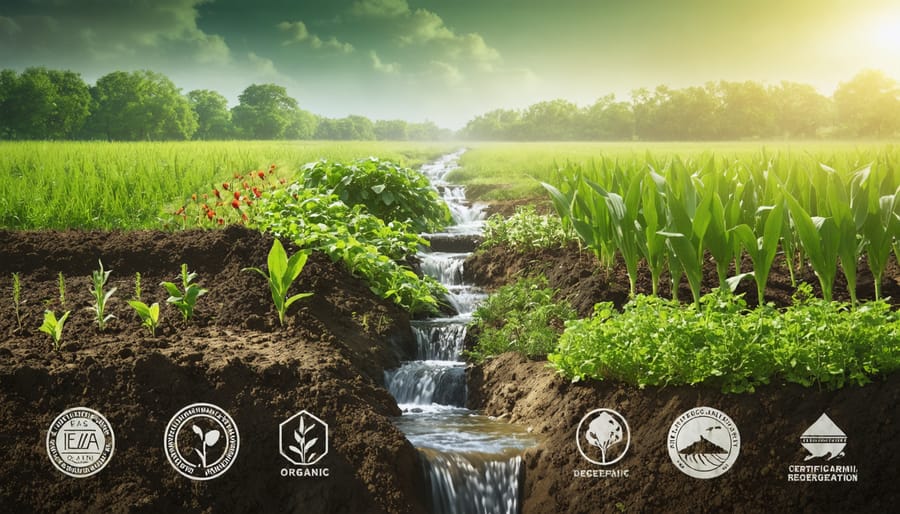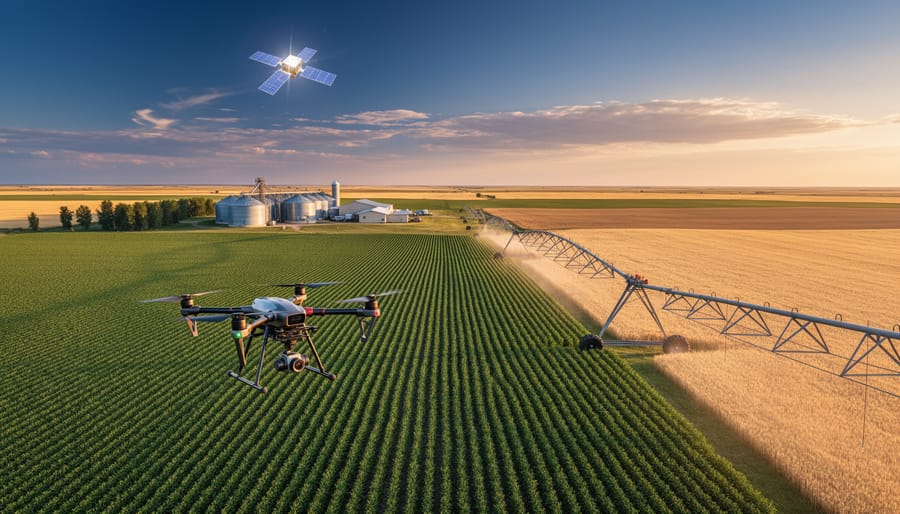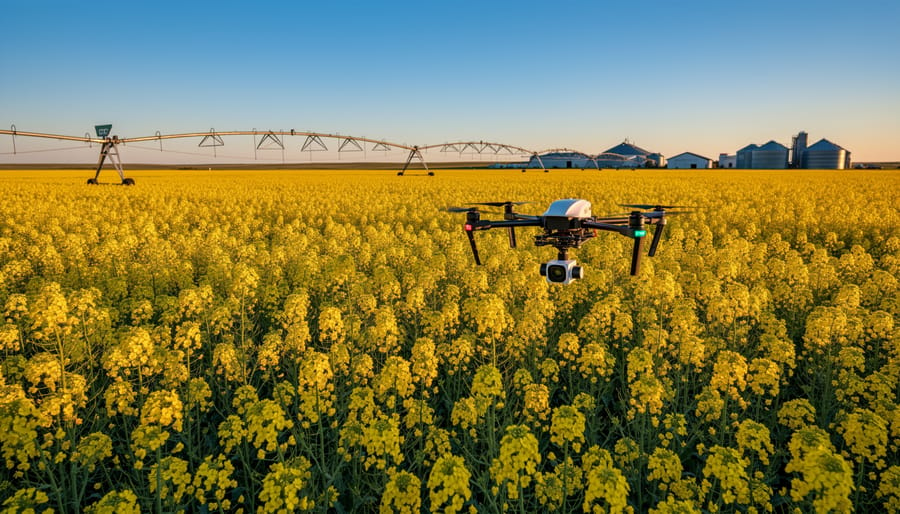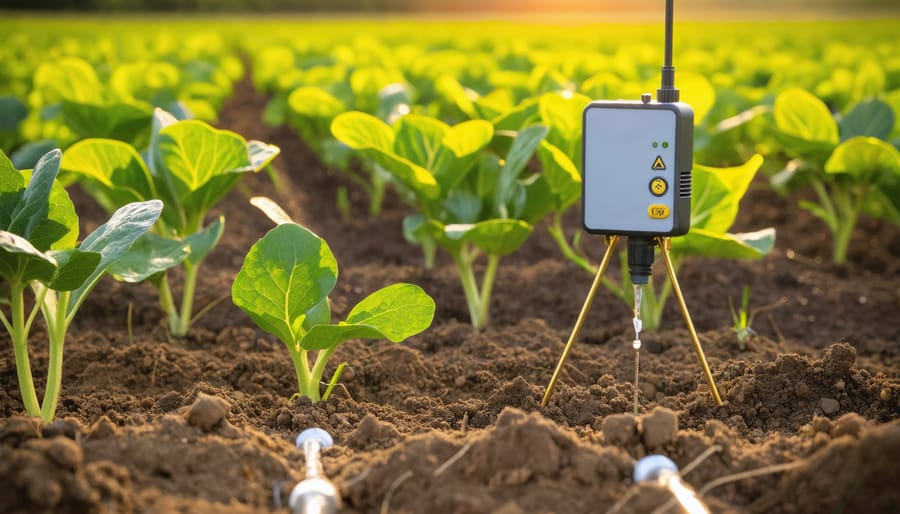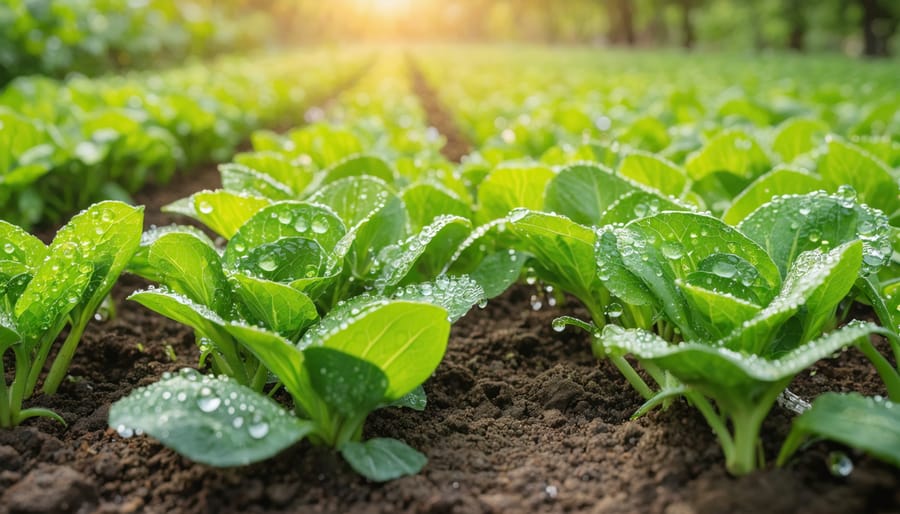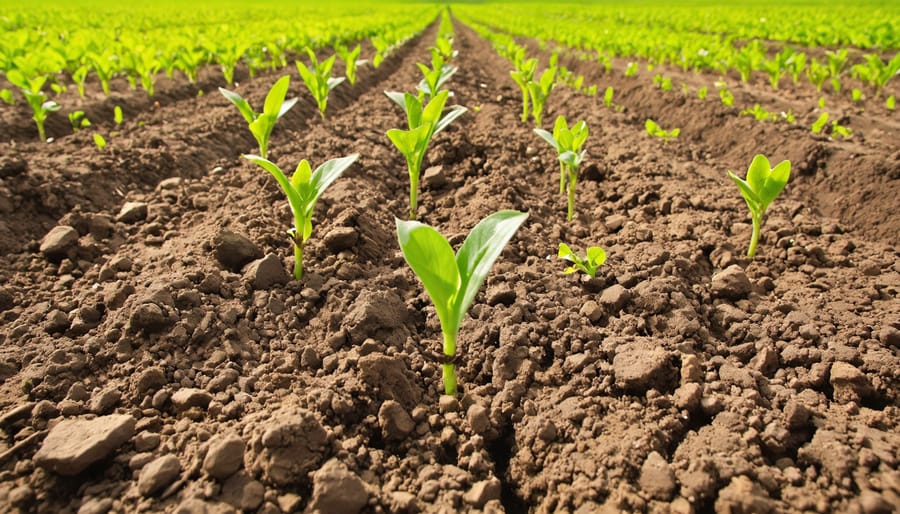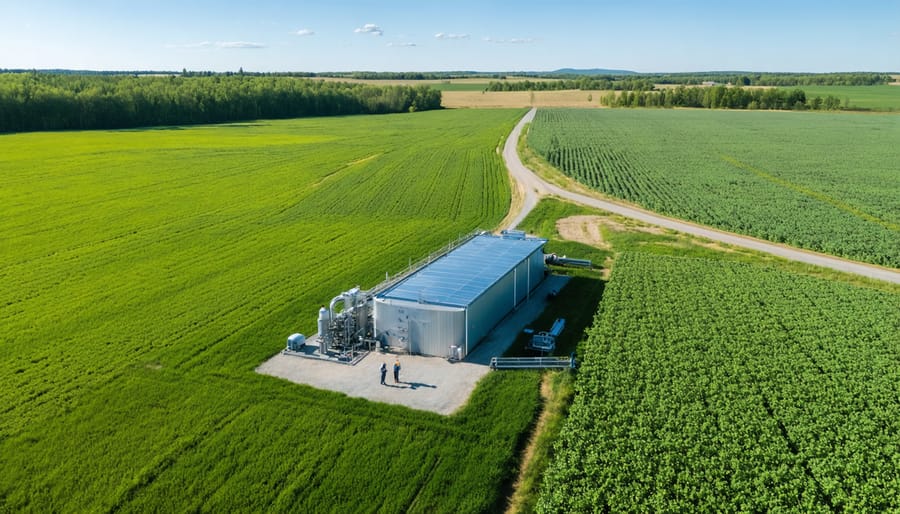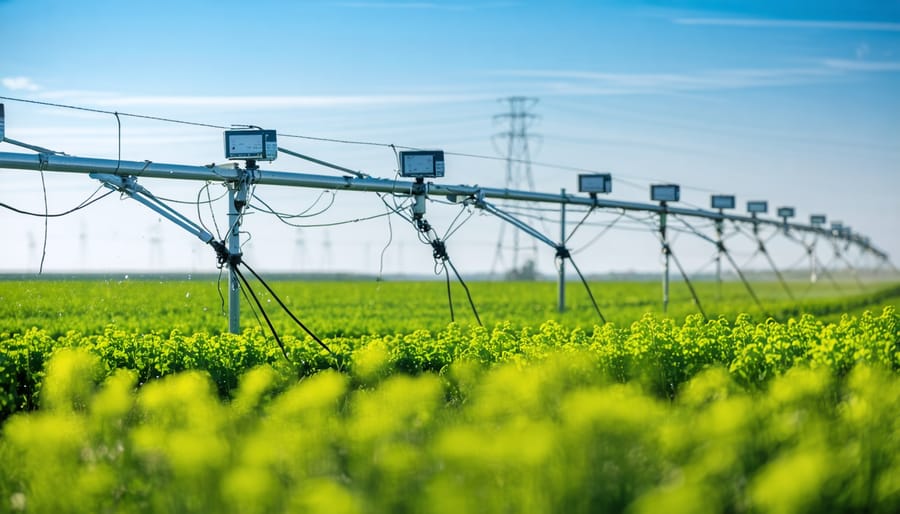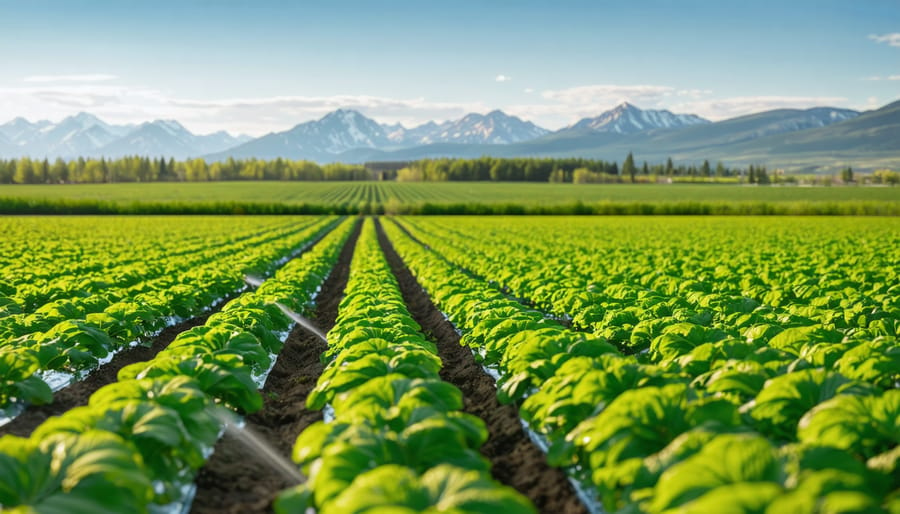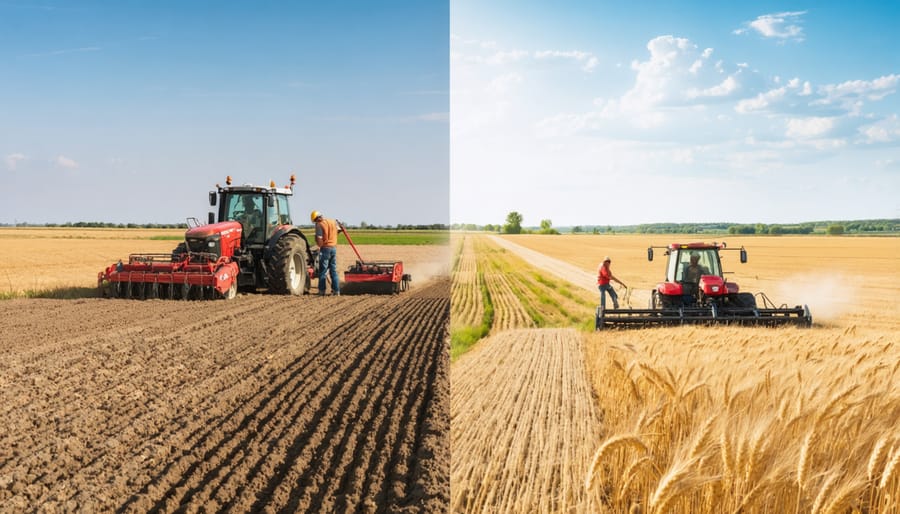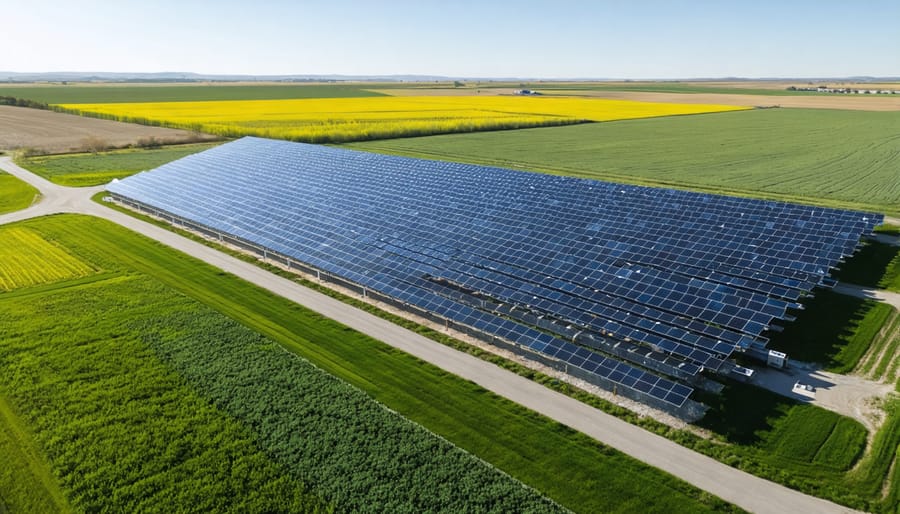Transform conventional farmland into thriving ecosystems through regenerative organic agriculture by implementing precise soil management techniques that go beyond basic organic certification. While organic farming prohibits synthetic inputs, regenerative practices actively rebuild soil health through intensive cover cropping, planned grazing, and sophisticated water conservation systems. Alberta farmers pioneering these methods report 40% higher water retention rates and up to 60% increased soil organic matter within three growing seasons. The distinction matters: organic certification ensures what stays out of the soil, while regenerative methods actively restore ecosystem functions. For Prairie producers facing increasing drought concerns, this integrated approach offers a practical pathway to building resilient agricultural systems that meet both organic standards and regenerative principles. Recent field trials across Southern Alberta demonstrate how these complementary approaches work together to create farming operations that are both certified organic and genuinely regenerative.
The Core Principles: Where Organic Meets Regenerative
Certification Standards vs. Outcome-Based Practices
While organic certification follows strict regulatory guidelines set by the Canadian Food Inspection Agency, regenerative farming takes a more flexible, outcome-focused approach. Organic certification requires detailed documentation, specific approved inputs, and regular inspections to maintain compliance. In contrast, regenerative practices prioritize measurable improvements in soil health, biodiversity, and ecosystem function, regardless of certification status.
Many Alberta farmers have found that regenerative methods naturally align with organic standards while offering additional benefits. For instance, both approaches emphasize soil health and prohibit synthetic pesticides, but regenerative farming goes further by actively promoting practices like cover cropping and planned grazing to enhance soil biology.
The key difference lies in the measurement of success. Organic certification measures compliance with set rules, while regenerative farming measures actual outcomes like increased organic matter, water retention, and wildlife diversity. This flexibility allows farmers to adapt practices to their specific conditions while working toward similar environmental goals.
For many producers, the ideal approach combines both: meeting organic standards while implementing regenerative practices that deliver tangible improvements to their land’s health and productivity.
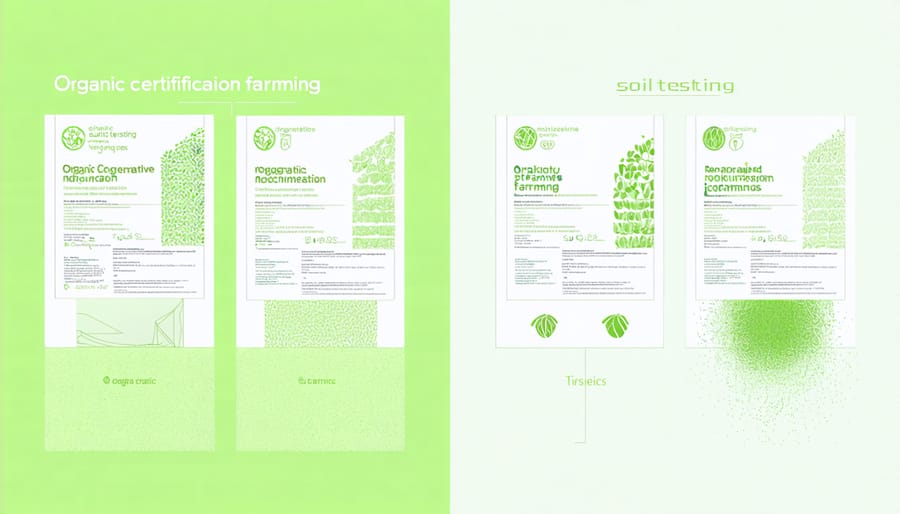
Water Management: The Common Ground
Water management stands as a crucial bridge between regenerative and organic farming practices, with both systems recognizing the fundamental importance of preserving this vital resource. In Alberta’s semi-arid climate, effective water management becomes even more critical for farm sustainability.
Both approaches emphasize building soil organic matter to improve water retention capacity. For instance, at the Meadowbrook Farm near Lethbridge, implementing cover crops and reduced tillage practices has increased soil water retention by 30% under both regenerative and organic systems.
The two methods also prioritize protecting water quality through natural filtration. Buffer zones along waterways, responsible grazing management, and careful attention to runoff are standard practices in both systems. Many Alberta farmers have found success using wetland preservation and restoration techniques that satisfy both organic certification requirements and regenerative principles.
The key difference lies not in the end goals but in the specific approaches. While organic certification provides strict guidelines about water testing and contamination prevention, regenerative practices often focus on creating whole-system water cycles that mimic natural patterns.
Water Management Techniques in Alberta’s Climate
Soil Water Retention Strategies
In both regenerative and organic farming, effective soil and water conservation practices are crucial for long-term sustainability. The key to water retention lies in building healthy soil structure through several proven methods. Cover cropping, particularly using deep-rooted species like clover and rye, creates natural channels that allow water to penetrate deeper into the soil profile while preventing surface runoff.
Adding organic matter through composting and crop residue management increases the soil’s water-holding capacity significantly. For every 1% increase in organic matter, soil can retain an additional 25,000 litres of water per hectare. Many Alberta farmers have found success using no-till practices combined with diverse crop rotations, which help maintain soil aggregates and natural water pathways.
Mulching, whether through crop residue or applied materials, reduces evaporation and protects soil moisture. Some regional farmers report up to 30% reduction in irrigation needs when implementing these strategies effectively. Living root systems throughout the year, achieved through thoughtful crop scheduling, create a natural underground water management system that benefits both soil health and water conservation.
These methods work together to create a more resilient farming system that can better withstand both drought and heavy rainfall events, which is particularly relevant for our prairie climate conditions.
Irrigation Innovation
Water management in regenerative farming goes beyond traditional organic practices, incorporating innovative technologies that maximize efficiency while maintaining soil health. Modern smart irrigation solutions like soil moisture sensors, weather-based controllers, and precision drip systems help Alberta farmers reduce water consumption while supporting regenerative principles.
These systems work in harmony with nature by mimicking natural water cycles. For instance, many Alberta farmers have adopted variable-rate irrigation technology, which adjusts water application based on soil conditions and crop needs across different field zones. This precise approach not only conserves water but also promotes deeper root growth and enhances soil organic matter.
Take the Peterson Family Farm near Lethbridge, which reduced their water usage by 30% after implementing soil moisture monitoring systems while improving their soil’s water-holding capacity through regenerative practices. Their success demonstrates how technology can support both organic certification requirements and regenerative principles.
When combined with cover cropping and minimal tillage, smart irrigation creates a synergistic effect that builds soil structure, increases water retention, and supports beneficial soil biology. This integrated approach helps farmers maintain organic certification while advancing their regenerative goals, proving that innovation and natural farming methods can work together effectively.
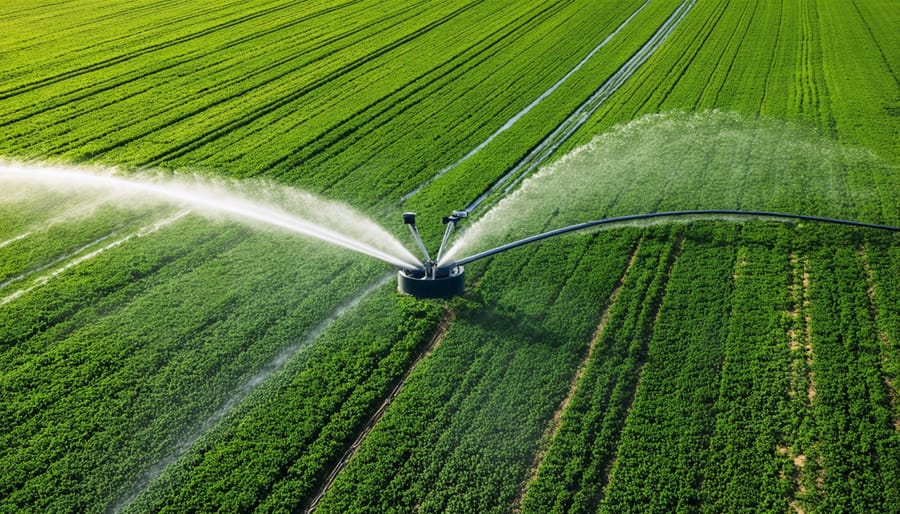
Natural Water Cycling
Water cycling in regenerative farming goes beyond typical organic practices by actively restoring natural water patterns across the landscape. Here in Alberta, where water conservation is crucial, many farmers are implementing innovative techniques to maintain healthy water cycles while improving soil health.
A key practice is the creation and preservation of wetland areas within farming operations. These natural water features act as filters, storing water during wet periods and slowly releasing it during dry spells. Prairie farmers like Jim Anderson in Lacombe have reported significant improvements in drought resilience after restoring wetlands on their properties.
Contour farming and keyline design are other essential techniques that slow water movement across the land. By following the natural topography, these methods help water infiltrate deeply into the soil rather than running off. This approach has proven particularly effective in our prairie landscape, where wind and sudden rainfall events can quickly deplete soil moisture.
Water-conscious farmers are also incorporating swales and retention ponds into their field designs. These features capture snowmelt and rainfall, creating a network of natural irrigation that supports crop growth throughout the growing season. Combined with cover cropping, these water management strategies help build organic matter in the soil, further improving water retention capacity.
Remember, while organic certification focuses on avoiding synthetic inputs, regenerative practices actively work to restore natural water patterns, benefiting both the farm ecosystem and surrounding watersheds.
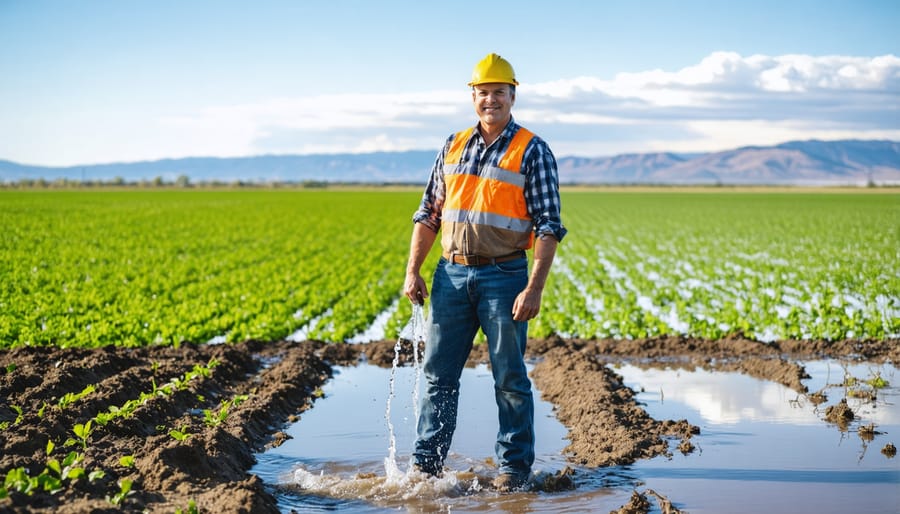
Case Study: Success in Southern Alberta
The Brown family farm, located just outside of Lethbridge, Alberta, has become a shining example of successfully combining organic certification with regenerative farming practices. Sarah and Mike Brown, third-generation farmers, transformed their 800-hectare operation over the past decade, focusing specifically on innovative water management techniques that satisfy both organic requirements and regenerative principles.
“We started our organic journey in 2012,” explains Sarah Brown, “but we quickly realized that being organic wasn’t enough. We needed to actively rebuild our soil and improve our water retention to deal with Southern Alberta’s unpredictable climate.”
The Browns implemented a comprehensive water management system that includes contour farming, permanent cover crops, and strategic placement of wetland areas. They designed their fields to follow natural land contours, reducing water runoff and erosion while maintaining organic certification standards. This approach has resulted in a 40% reduction in irrigation needs compared to their previous conventional methods.
One of their most successful initiatives has been the installation of bioswales – shallow drainage courses with gently sloped sides. These features slow water movement across their property while naturally filtering out pollutants, aligning perfectly with both organic and regenerative principles. The bioswales are planted with native prairie grasses and flowers, creating wildlife corridors that have increased local biodiversity.
“The results speak for themselves,” Mike shares. “Our soil organic matter has increased from 2% to 5% in eight years, and we’re seeing consistent yields even in drought years.” The Browns also report significant cost savings, with their water-efficient system reducing irrigation expenses by approximately $15,000 annually.
Their success has attracted attention from both organic certifiers and regenerative agriculture advocates. The farm regularly hosts field days for local farmers interested in learning about their water management techniques. “What works for us might need tweaking for others,” Sarah notes, “but the principles remain the same – work with nature, not against it.”
The Browns’ approach demonstrates that organic certification and regenerative practices can work hand in hand, particularly in water management. Their success has inspired a growing network of Southern Alberta farmers to explore similar methods, creating a community of knowledge-sharing and mutual support in sustainable agriculture.
Implementation Strategy for Your Farm
Assessment and Planning
Before transitioning to regenerative farming practices, it’s essential to conduct a thorough assessment of your current operations. Start by documenting your existing soil health, including organic matter content, microbial activity, and water retention capacity. This baseline data will help track improvements over time.
Create a detailed farm map highlighting areas that need immediate attention, such as erosion-prone zones or spots with poor drainage. Consider implementing water-smart organic farming practices that align with both regenerative and organic principles.
Develop a season-by-season implementation plan that includes:
– Soil testing schedule (quarterly recommended)
– Cover crop rotation plans
– Composting system development
– Water management infrastructure improvements
– Biodiversity enhancement strategies
Connect with local agricultural extension services and experienced regenerative farmers in Alberta for guidance. Many successful transitions have started with small test plots before scaling up. Consider joining regional farmer networks to share experiences and resources.
Set realistic timelines and measurable goals for your transition. Remember that certification requirements for organic farming can be integrated gradually while building regenerative practices. Document all changes and maintain detailed records of inputs, treatments, and outcomes to support future certification efforts.
Resource Integration
Alberta farmers looking to integrate regenerative and organic practices have access to a robust network of support and resources. The Alberta Organic Producers Association (AOPA) offers certification guidance, training workshops, and mentorship programs specifically designed for farmers transitioning to regenerative methods.
The Environmental Farm Plan (EFP) program provides funding opportunities and technical assistance for implementing sustainable practices. Farmers can access up to $50,000 in cost-shared funding for projects that enhance soil health and water management systems.
Several agricultural research stations across Alberta, including those in Lethbridge and Lacombe, conduct ongoing studies and field demonstrations of regenerative techniques. These facilities regularly host farm tours and workshops where farmers can learn firsthand from successful implementations.
The Canadian Agricultural Partnership (CAP) in Alberta offers specialized programs supporting sustainable agriculture initiatives. Local agricultural societies and farmer-led organizations provide community-based support through knowledge sharing and networking events.
For soil testing and analysis, the Alberta Farm Fresh Producers Association maintains partnerships with certified laboratories offering discounted services to members. Additionally, the Agricultural Research and Extension Council of Alberta (ARECA) provides regular technical bulletins and online resources specific to regenerative farming practices in our local climate conditions.
These integrated support systems help ensure Alberta farmers can successfully implement and maintain regenerative farming practices while working toward organic certification if desired.
Organic and regenerative farming practices work hand in hand to create robust water management systems that benefit both the land and the farmer. While organic certification provides a structured framework for water quality standards, regenerative practices enhance these benefits by improving soil structure and water retention. Alberta farmers who combine both approaches often report reduced irrigation needs and better drought resilience. The integration of cover crops, minimal tillage, and strategic grazing – common to both practices – creates a synergistic effect that maximizes water efficiency. By embracing these complementary approaches, farmers can build more resilient operations that protect our water resources while maintaining productive and profitable farms. As our climate continues to change, this combined approach offers a practical solution for sustainable water management in Canadian agriculture.

